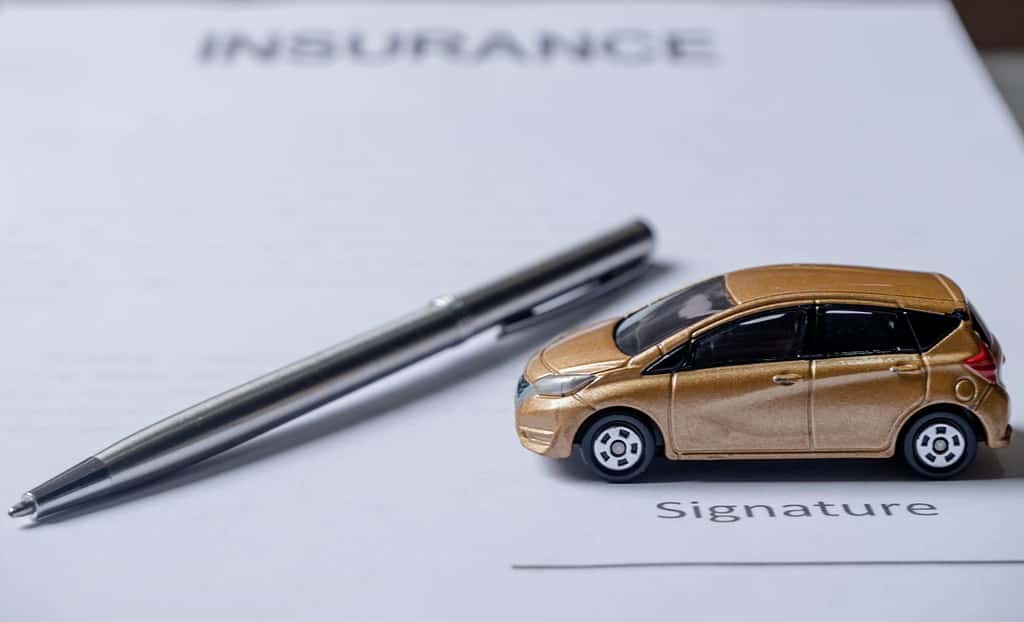You’re probably thrilled that you finally got your license. You may drive to work, run errands efficiently, or even go for spontaneous adventures renting a car in Iceland enjoying your newly found freedom.
Unfortunately, you might have forgotten one crucial thing when you got your driver’s license- the cost of auto insurance.
Car insurance can be so expensive, and if you’re a new driver, you’ll probably pay higher rates than someone who has been on the road for years!
If you live on a basic salary, you may not afford to pay the insurance and maintain that vehicle.
With this cost challenge, are you wondering how to get car insurance for the first time? This article makes the process of getting car insurance for new drivers so easy to navigate.
Read on the learn the basics.
I’m a New Driver – How Do I Get Car Insurance for The First Time?
Shopping for car insurance is not an easy task, and especially if it’s your first time. As a new driver, you must be asking yourself so many questions about how to get started.
One of the most commonly asked questions among new drivers is, how does car insurance work for new drivers?
How Car Insurance Works for New Drivers
Auto insurance works the same for both first-time and experienced drivers alike.
Your car insurance policy is an agreement between you and the insurance company. You will pay for coverage periodically while the provider covers the cost of injuries, vehicle repairs, and any other damages.
When you buy car insurance, you select coverage limits that dictate how much financial protection you will be receiving from your policy. Your insurance premiums increase every time you increase your auto insurance policy limits.
Your insurance comes through when your car is damaged, stolen, or after a road accident. The source of damage and the person responsible will affect the claims process, but you generally make a claim to avoid footing the cost of repair or car replacement yourself.

So, how do I get car insurance for the first time?
There are two ways of getting insurance for the first time: being added to an existing car insurance policy or getting a new car insurance policy on your own.
Your best bet at getting car insurance for the first time is being added to an existing driver’s auto insurance policy. This is especially true if you’re a teenage or young driver.
How to Get Added as a Driver
Here are several ways you can get added to an existing car insurance policy as a new driver:
1. Be Added to an Existing Car Insurance Policy
The first thing to do here is to ask your parents, sibling, or partner to add you to their car insurance policy.
Adding a driver is likely to change their type of insurance cover as well as the charges.
2. Modify the Policy of the Insured Person
Some insurance agencies can permit you to make policy changes online, but others require you to visit their offices.
The insurer will then add your details to the car insurance policy. You may also be required to provide identification.
3. Pay for the Additional Insurance Costs
Adding another driver to an auto insurance policy will attract additional costs.
It would be so wrong if you were to wait for the named policyholder to cover your costs. So, make sure to cater to the difference yourself.
4. Get Proof of Car Insurance
You can receive the documents in person, by mail, or send them to you online. Just make sure to have of insurance before hitting the road.
What Is the Process for Getting Car Insurance for a New Driver?
Securing a beginner’s car insurance on your own is not easy, but you can do it. If you’re the only licensed driver in the household or live alone, the option of being insured as an additional driver.
So, what’s the process for getting car insurance for a new driver?
Step One: Find an Insurance Provider who Insures New Drivers
Honestly speaking, this is the hardest step. Most insurance agencies avoid first-time drivers because of the high risk associated with them.
Search online for insurance agencies providing insurance covers for new drivers. The driver’s profile that you’re required to complete will indicate whether the company secures auto insurance coverage for first-time drivers.
Step Two: Fill Out an Online Quote
Every auto insurance company has its own set of requirements for its quotes. Usually, you fill out your personal information, including:
- Driver’s license
- Date of birth
- Address
- Occupation
- Marital status
- Driving history
- Insurance history
As a new driver, you obviously won’t have any driving history, and this will affect your insurance cost.
It’s also essential to have your car’s year of manufacture, make, and model because it helps you get the best policy for your new car insurance.
Step Three: Compare Car Insurance Coverage Options
The more coverage options you choose, the higher your insurance premium will be. Only go for the coverage that you need. And at minimum, liability insurance is a must-have.
Alternative options that you can select include uninsured and underinsured coverage, collision coverage, and comprehensive coverage.

Since you are a first-time driver, you can cut costs by avoiding towing coverage and rental insurance. Choosing a higher deductible to keep your premiums low is also recommended.
Step Four: Pay for Your Chosen Car Insurance Policy
This is the easiest step since you can pay online and have the documents sent to you digitally in real-time.
Good thing, as you gain experience with car insurance, your costs will reduce significantly, and more options will be available for you.
Just keep a clean driving record and avoid tickets if you can to keep your rates low.
What Should I Expect to Pay for My Insurance?
All auto insurance policy premiums are based on risk. Every person has their own unique risk profile, and multiple factors are considered when setting the rates.
As a new driver, you could be wondering how much you should expect to pay for your insurance.
Well, putting a price tag on auto insurance is not easy. But generally, it might be expensive because of the added risk.
During risk assessment, car insurance companies will look at your:
a) Age
Statistics show that teenagers and younger drivers below the age of 29 record the highest number of car accidents and DUI convictions. So, it’s not uncommon for insurance agencies to charge this age group more for car insurance.
If you are a new driver but happen to be above 30 years of age, your rates could be slightly lower.
b) Vehicle Make and Model
A new driver with a new and more expensive car will pay higher insurance rates than a driver who owns an older, modest vehicle.
Your insurance agency could also charge you more to cover an electric or high-performance auto.
c) Type of Coverage
You will spend less money by buying liability insurance than you would if you go for collision and comprehensive coverage.
But if you’re still financing or leasing your car, buying collision and comprehensive coverage is the best bet for you. You can later opt-out of additional coverage when done paying off the loan.
d) Credit Score
Individuals who don’t have an established credit score, such as immigrants, tend to pay more. In fact, they pay the same premium as a person with a DUI.

Drivers with higher credit scores attract more reasonable coverage rates because insurance companies consider them more stable.
But credit is not considered in all states. Age and type of vehicle will have a more significant impact on your rates.
e) Location
Is your neighborhood safe? If it has high rates of theft or vandalism, expect to part with more cash for insurance.
What Do I Need to Know About Car Insurance for New Drivers?
As a new driver, your goal is to secure affordable auto insurance coverage. Here are things you need to know that will help you do just that without sacrificing your safety on the road.
a. Shop Around for Affordable Insurance Companies
Sometimes it’s advisable not to go for insurance agencies with big names, particularly when you’re a new driver. There are affordable insurance companies out there, and they offer competitive rates for new drivers.
Yes, your rates will still be higher than rates of drivers with driving history but much better than what established insurers would otherwise charge.
You could start with basic liability insurance with these small agencies then upgrade to more prominent companies after driving and being insured for some time. By then, you’ll be eligible for better rates with them.
b. Take a Defensive Driving Course
You pose a higher risk for car insurers when you’re inexperienced, and that’s why new drivers pay higher rates.

But if you took a defensive driving course, it could make up for your lack of experience. In turn, this would increase your room for bargaining for a discount on car insurance coverage.
These courses are available online, but you can also check with your local Department of Motor Vehicles.
c. Stay on Your Parent’s Policy
As earlier mentioned, you can save a lot on car insurance if you request your parents to include you in their policy.
As long as you live with them and are still in college, you can be covered by their policy even if the car you drive is yours.
d. Buy a Reliable Vehicle
A new driver on a budget might be tempted to go for the cheapest used car. But don’t! This could cause a significant increase in your insurance rates.
You’d be mistaken to think that cheaper vehicles are less costly to insure. But in reality, cars in older conditions are more likely to break down or sustain damage.
Find a car in good shape not only to keep your insurance rates low but also be assured of your safety.
Bottom Line
Getting your license and being free to drive can feel like a huge step, but the high cost of car insurance might discourage you as a new driver.
New drivers may consider being added to an existing insurance policy or starting off with the basic liability insurance on their own.
Remember, you won’t be a new driver forever. You just have to gain some driving experience and make sure your driving history is clean, and eventually,

